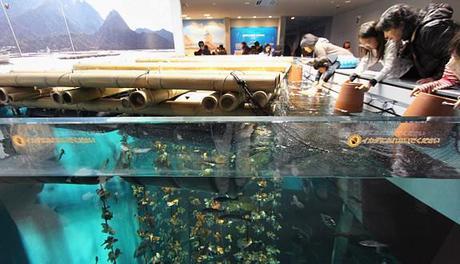 Big companies that operate worldwide use product localization to cater to the tastes and preferences of the various countries in which they conduct business. At the Coca-Cola museum in Atlanta you can taste soda from around the world and discover how some variations are much sweeter than others. In Japan, there is no Diet Coke, but Coke Free that is made without sugar and has no calories. Japanese McDonalds serve yakitori burgers and have much smaller drink sizes to cater to local preferences. Some other fast food restaurants have rice instead of bread for buns.
Big companies that operate worldwide use product localization to cater to the tastes and preferences of the various countries in which they conduct business. At the Coca-Cola museum in Atlanta you can taste soda from around the world and discover how some variations are much sweeter than others. In Japan, there is no Diet Coke, but Coke Free that is made without sugar and has no calories. Japanese McDonalds serve yakitori burgers and have much smaller drink sizes to cater to local preferences. Some other fast food restaurants have rice instead of bread for buns.
With energy, a similar kind of localization has to take place. The types of renewable power are highly dependent on the natural environment. Some areas are good for solar power (the U.S. southwest, Mexico, Northern Africa) but you’d be hard pressed to propose a major solar farm in, say, Seattle. Rather, western Washington state uses its plentiful and mighty rivers to produce hydro power.
In addition, depending on the culture, industries, and infrastructure in place, a region should think about creative ways to integrate alternative energies. In the Yatsushiro Sea off of Kyushu in southern Japan, Minamata City and Fuji Electric are testing a unique way to use solar power. Kumamoto oysters are heavily cultivated right off the coast on rafts floating in the sea. The plan is to place solar cells on the upper surfaces of the rafts, using the energy generated by the photovoltaic panels to activate an underwater micro-bubble generator. The generator will purify the water, promoting growth of the oysters. According to this article
After developing the photovoltaic power generation system integrated with culture rafts floating on the sea surface, which are resistant to seawater corrosion, the project aims to develop and demonstrate an independently powered culture system utilizing an automatic feeding system, a wireless remote monitoring system including underwater cameras, and a system for improving the culture environment using micro-bubbles.
This is a great example of creatively combining local industries and traditions with modern technology, while increasing the value of the local industry’s product.
[Image]

